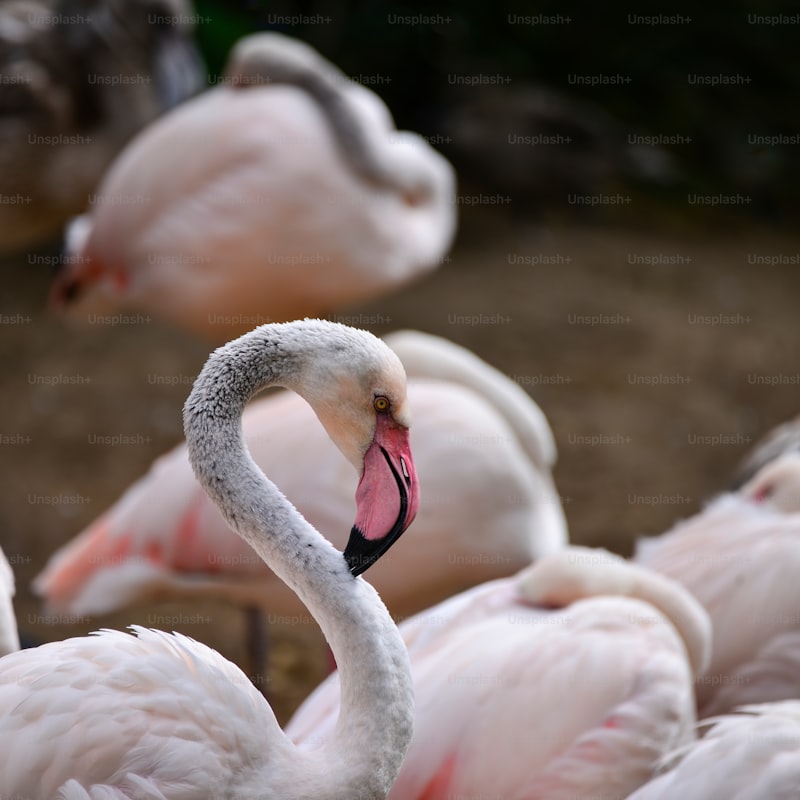In the heart of Denmark, the Aalborg Zoo stands out not only for its conservation efforts but also for its immersive exhibits that transport visitors to different continents. Here, you can observe polar bears playfully navigating icy waters and exotic birds soaring through lush, tropical habitats—all within a short stroll.
Venture south to Portugal’s Lisbon Zoo, nestled in the serene Eduardo VII Park. This historic zoo blends modern conservation with a century-old legacy, showcasing rare Iberian lynxes and majestic Iberian wolves. Its commitment to breeding endangered species ensures a future for Europe’s most threatened wildlife.
Traveling eastward to Hungary, the Szeged Zoo offers a uniquely intimate encounter with Central European fauna. Tucked along the Tisza River, this compact zoo is renowned for its innovative habitats, where visitors can observe Hungarian grey cattle grazing peacefully alongside indigenous deer and wild boars.

For those captivated by marine life, Croatia’s Dubrovnik Aquarium and Maritime Museum offers a captivating journey beneath the Adriatic Sea’s surface. Housed within a 19th-century fortress, this aquarium not only showcases local fish species but also educates visitors on the region’s maritime heritage.
In the verdant heart of England, the Chester Zoo stands as a testament to wildlife conservation. Spanning 125 acres, it hosts over 35,000 animals, including critically endangered species like the Eastern black rhinoceros and Sumatran orangutan. Its immersive habitats and conservation programs inspire visitors of all ages to champion global biodiversity.
These European zoos and wildlife sanctuaries are more than mere attractions; they are guardians of our planet’s natural wonders, offering profound experiences that foster a deep connection between humans and wildlife. Whether seeking adventure or tranquility, each sanctuary promises a journey filled with awe and appreciation for the remarkable diversity of life on Earth.
Into the Wild: Exploring Europe’s Most Enigmatic Wildlife Sanctuaries
One such sanctuary is the Białowieża Forest, straddling Poland and Belarus. Known as Europe’s last primeval forest, it harbors iconic species like the European bison, reintroduced after near-extinction. Here, ancient oaks stand as silent witnesses to centuries of natural history, offering shelter to wolves, lynxes, and rare bird species.
Moving southward, the Carpathian Mountains host another jewel: the Tatra National Park in Slovakia. This alpine wonderland is a haven for wildlife enthusiasts, boasting chamois darting across rocky slopes and brown bears foraging in lush meadows. Its breathtaking vistas and untouched wilderness make it a paradise for hikers seeking to reconnect with nature.
Venturing west to Spain, the Coto de Doñana National Park stands out as a sanctuary for migratory birds. Nestled where the Guadalquivir River meets the Atlantic Ocean, it is a critical stopover for thousands of waterfowl, including flamingos and herons. The park’s marshlands and dunes support a rich tapestry of life, showcasing the delicate balance between land and water.
Further north lies the Retezat National Park in Romania, celebrated for its rugged landscapes and endemic species. Here, the Retezat Mountains shelter elusive creatures like the chamois and golden eagle amidst glacial lakes and dense forests. The park’s remote trails offer adventurers a chance to witness nature’s resilience in Europe’s wild heart.
Beyond the Ordinary: Europe’s Zoos Redefine Animal Conservation
Imagine stepping into a world where every enclosure tells a story of resilience and care. European zoos excel not only in housing diverse species but also in their commitment to conservation efforts. Each visit becomes a journey of discovery, where visitors of all ages can witness firsthand the efforts to protect endangered species and restore habitats.
What sets Europe’s zoos apart is their dedication to education and research. They serve as living classrooms where scientists and conservationists collaborate to understand and safeguard biodiversity. Through interactive exhibits and guided tours, visitors gain a deeper appreciation for the delicate balance of ecosystems and the urgent need for conservation action.
Moreover, these zoos play a crucial role in breeding programs for endangered species. They serve as lifelines for species on the brink of extinction, offering a safe haven where animals can thrive and populations can be bolstered through careful breeding and reintroduction programs.
Beyond their conservation efforts, European zoos are hubs of innovation. They pioneer sustainable practices, from energy-efficient facilities to eco-friendly exhibits that mimic natural habitats. By leading by example, these institutions inspire visitors to adopt sustainable lifestyles and become stewards of the environment.
Hidden Gems: Discovering Europe’s Lesser-Known Wildlife Havens
Europe is renowned for its historical landmarks and vibrant cities, but beyond the bustling streets lies a world of hidden gems: lesser-known wildlife havens that are waiting to be discovered. These untouched sanctuaries offer a glimpse into the continent’s rich biodiversity, where nature thrives in its purest form.
Imagine stepping into a tranquil forest where ancient trees whisper stories of centuries past, or wandering through expansive meadows adorned with vibrant wildflowers dancing in the gentle breeze. These are not scenes from a fairy tale but real-life landscapes found in Europe’s hidden wildlife havens.
One such gem is the Białowieża Forest, straddling the border between Poland and Belarus. This ancient woodland is a UNESCO World Heritage site and home to the European bison, Europe’s largest land mammal. Here, amidst towering oak and hornbeam trees, visitors can witness nature’s resilience and beauty in its most pristine state.
Venture further south to the Picos de Europa National Park in Spain, where jagged limestone peaks rise dramatically above lush valleys. This rugged terrain harbors a diverse array of wildlife, including the Iberian wolf and the Cantabrian brown bear. Hiking trails lead adventurous souls through breathtaking landscapes where each turn reveals a new marvel of nature.
For those drawn to coastal charms, the Wadden Sea in the Netherlands offers a unique blend of marine and terrestrial habitats. This UNESCO World Heritage site is a haven for migratory birds and marine life, where expansive mudflats and salt marshes provide vital ecosystems for countless species.

Each of these hidden gems tells a story of conservation success and the resilience of nature against all odds. They remind us of the importance of preserving these havens for future generations to explore and cherish. Whether you seek solitude in ancient forests, thrill in rugged mountain landscapes, or marvel at coastal wonders, Europe’s lesser-known wildlife havens promise an unforgettable journey into the heart of nature’s wonders.
Wild Encounters: Europe’s Zoos that Offer More Than Just Viewing
In Berlin, the Tierpark showcases a blend of history and modern conservation. As you wander through its sprawling grounds, you’ll encounter not only exotic animals but also remnants of East Germany’s past. It’s like stepping into a time capsule where history meets biodiversity.
Moving south to Vienna, the Schönbrunn Zoo mesmerizes with its imperial ambiance and pioneering spirit in animal care. Home to giant pandas and rare European species, it’s a haven for both wildlife enthusiasts and families seeking a day of wonder.
Across the channel in London, ZSL London Zoo beckons with its storied past and cutting-edge exhibits. From Land of the Lions, where you roam through an Indian village surrounded by majestic big cats, to Penguin Beach, where playful penguins frolic in a setting reminiscent of the South Atlantic coast, every visit is a journey.
In Spain, the Valencia Bioparc stands out for its innovative design that immerses visitors into the animals’ natural habitats. Here, you’ll feel transported to the African savannah or the lush jungles of Madagascar, where lemurs leap from tree to tree in a world that mirrors their own.
Further east, the Budapest Zoo blends historic charm with a modern conservation ethos. Nestled in the heart of the city, it’s a sanctuary for endangered species like the Hungarian ox and the Przewalski’s horse, offering a glimpse into Hungary’s commitment to biodiversity.
These European zoos aren’t just places to see animals—they’re windows into different worlds, where conservation meets education and every visit leaves you with a deeper appreciation for the wonders of wildlife. Whether you’re a solo traveler, a family on an adventure, or a couple seeking a unique date spot, Europe’s zoos offer more than meets the eye.
Conservation Champions: Europe’s Zoos Leading the Charge in Wildlife Preservation
Imagine walking through a lush green oasis where the air is filled with the sounds of nature—this is the atmosphere many European zoos aim to create. Beyond showcasing animals, they serve as hubs of conservation innovation and advocacy. Take, for instance, the Frankfurt Zoological Garden in Germany, where experts work tirelessly to breed endangered species like the European bison, once on the brink of extinction.
What sets these zoos apart is their commitment to not just housing animals, but actively participating in species recovery programs. The Prague Zoo in the Czech Republic, nestled by the Vltava River, exemplifies this dedication. It’s renowned for its successful breeding programs of rare amphibians and reptiles, helping to replenish populations that are dwindling in the wild due to habitat loss and climate change.
Moreover, these institutions are not confined to their enclosures; they extend their influence globally through partnerships and collaborations. The Bristol Zoo Gardens in the UK, for example, collaborates with conservation organizations worldwide to support field projects that protect habitats and species in their native environments.
Visiting these zoos isn’t just about marveling at the animals; it’s about understanding the interconnectedness of all living things and the role we play in their survival. They offer interactive exhibits and educational programs designed to inspire visitors of all ages to take action for wildlife conservation. By fostering empathy and understanding, they empower individuals to make a difference in their own communities.
In essence, Europe’s zoos are more than just tourist destinations—they are conservation champions, leading the charge in preserving our planet’s biodiversity. Through their efforts in breeding endangered species, conducting research, and educating the public, they are ensuring that future generations will still be able to witness the beauty and diversity of wildlife firsthand.
Frequently Asked Questions
What are the best European wildlife sanctuaries for family visits?
Discover the top European wildlife sanctuaries perfect for family visits. Find out where to experience diverse wildlife and educational activities suitable for all ages.
Which European zoos focus on conservation efforts?
Discover European zoos committed to conservation efforts. Learn about leading institutions dedicated to wildlife preservation, habitat restoration, and species protection across Europe.
How can I visit the most unique zoos in Europe?
Discover how to explore the most unique zoos in Europe with our concise guide. Learn about standout features, must-see exhibits, and insider tips for an unforgettable zoo experience across Europe.
Which European zoos offer the most immersive animal encounters?
Discover which European zoos provide the most immersive animal encounters with our concise guide. Learn about top destinations where you can engage closely with wildlife, enhancing your zoo experience.
What are some unique features of European wildlife sanctuaries?
Discover the unique features of European wildlife sanctuaries, showcasing diverse ecosystems and species native to the continent. These sanctuaries offer opportunities for wildlife observation, conservation efforts, and ecological education amidst breathtaking natural landscapes.


